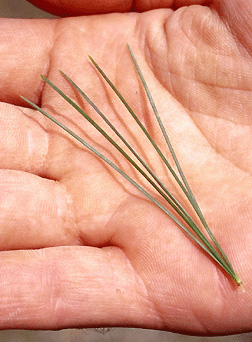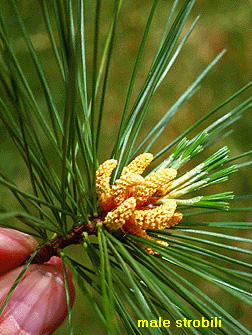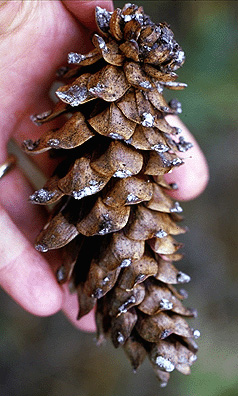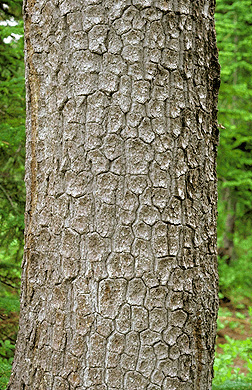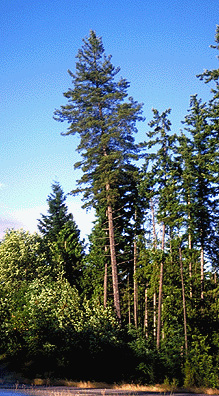 Virginia Tech Dendrology
Virginia Tech Dendrology
western white pine Pinaceae Pinus
monticola Douglas ex D. Don
![]()
![]() symbol: PIMO3
symbol: PIMO3
Leaf: Acicular, 2 to 4 inches long, fascicles of 5, blue-green with white lines of stomatal bloom on two of the three needle surfaces, persist 3 to 4 years, bundle sheath is deciduous, apex blunt.
Flower: Species is monoecious; male cones are small, yellow, and clustered near the tips of branches; female cones are larger, almost round, greenish pink in color, and clustered near the tips of branches in the upper parts of the crown.
Fruit: Large cylindrical woody cones, 5 to 12 inches long, thin and curved. Brown when mature; scales thin and unarmed, typically tipped with globs of white resin; very short stalk.
Twig: Moderately stout and grayish brown.
Bark: Initially thin and grayish green later becoming up to 2 inches thick, gray to purplish gray and broken into square or rectangular blocks, not ridged and furrowed. Dark bands commonly encircle the tree where whorls of branches have fallen off.
Form: Tall, straight, evergreen conifer growing to 180 feet tall and 4 feet in diameter with an open crown, long up-raised branches near the top (horizontal lower down); bole commonly free of branches for half its length.
Looks like: sugar pine
- limber pine
- whitebark pine
Additional Range Information: Pinus monticola is native to North America. Range may be expanded by planting. Download the full-size PDF map.
More Information: Wood - Landowner Factsheet
External Links: USDAFS Silvics of North America - USDAFS FEIS Silvics - USDA Plants Database - USDAFS Forest Products Lab
All material 2021 Virginia Tech Dept. of Forest Resources and Environmental Conservation; Photos and text by: John Seiler, Edward Jensen, Alex Niemiera, and John Peterson; Silvics reprinted from Ag Handbook 654; range map source information
